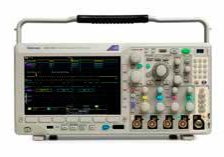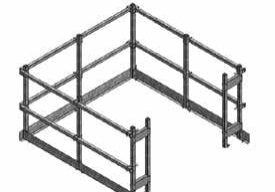Service Safety in the Elevator Industry
May 1, 2016
This audiovisual resource serves as a good orientation to lift safety.
“Working safely is a way of life!” With that perspective, the Service Safety in the Elevator Industry DVD seeks to orient new maintenance technicians to best practices on the job. Safety guidelines are demonstrated in this 32-min. video featuring a technician working on equipment in the Retirement Systems of Alabama tower in Mobile, Alabama. This new 2014 edition, following the earlier 2002 and 1995 editions, reflects updates in the Elevator Industry Field Employees’ Safety Handbook. Zack McCain’s original script was updated and edited by the National Elevator Industry, Inc.Field Safety Committee and Elevator World, Inc. (EW).
In terms of audio and visual quality, the new edition is a marked improvement on the earlier ones. Lede Media, LLC did a good job recording and producing the video. The DVD also comes with questions and answers that can be used to examine employees after they watch it.
In the introduction, the narrator makes it clear that while the video augments a company’s safety program, it is not a standalone. It does not cover every possible workplace condition and does not reflect all company, state and federal laws and requirements. While the safety handbook is accepted by OSHA, technicians must make sure they know and follow other stipulations applicable to the local jurisdiction.
The video walks viewers through a routine inspection and maintenance of an elevator. In each aspect of the job, the narrator stresses organization, neatness, order, caution and professionalism. The technician plays an important role as the face of the company to building owners and other clients. Good appearance and attitude go a long way in ensuring the success of the company and, by extension, the technician.
Service technicians are to do a job-hazard assessment before starting work so they know which tools and gear are needed to get the job done safely. Their clothing differs from that of construction workers, but technicians still need head, foot and leg, hearing, eye and face, and respiratory protection for different phases of the job. The proper shoes, safety glasses with side protection, nonmetallic eye protection, gloves, hard hats, hearing protection and fall hazard protection are key. When dealing with chemicals and toxins, the technician must consult the Material Safety Data Sheet and control exposure to harmful solvents and flammable liquids.
While the service technician works alone with machines much of the time, human communication is also a part of the job. It is important to notify facility managers of their presence at the work site. This can also give the technician a chance to get some feedback on the elevator’s performance, which can be helpful when diagnosing issues.
The narrator stresses preventative measures technicians must take. Simply cleaning up debris, wiping oil spills, checking the fire extinguisher, replacing burnt-out bulbs in the machine room and pumping water out of the pit can go a long way in preventing dangerous accidents. Moreover, the safety of the riding public is also an important consideration. The technician is to set up barricades at the landings to keep people from trying to use the elevator.
Completely removing energy from the elevator system is an important step before performing maintenance on the unit. The video stresses technicians look away and stand to the side as they shut off power from the disconnect. Since it is possible for stored energy in the controller and other components to shock or move equipment, it is important to discharge any remaining energy to ground. The same must be done for hydraulic elevators.
Bypass switches eliminate the need for temporary jumper wires by allowing the technician to move the elevator up or down in inspection mode, but the video still outlines the safe use of jumpers if they are needed. Proper clothing comes into play again with regard to electrical safety. The technician is to wear long-sleeved natural fiber or fire-rated shirts and pants, and arc-flash-hazard protection. All electrical sources should be considered and treated as live until checked.
The narrator outlines safety measures to be taken in the hoistway. It is best to enter the hoistway and begin maintenance from the top terminal landing. The technician is to determine the best refuge area in case of an emergency and watch the movement of any adjacent equipment. The video also outlines the protocol for communication between two technicians working together on the same elevator.
While performing maintenance in the pit, it is very important that the elevator be locked out and tagged out before work is begun. The greatest dangers in the pit are moving equipment and inadequate refuge space. The narrator cautions technicians to be ready to drop to their hands and knees if need be. Wooden timbers are not to be used to prop up the elevator; instead, only pipe stands of the proper length should be used.
The video includes a section on safe maintenance practices on escalators and moving walks. The conclusion lists the tasks that need to be completed before leaving the site. The technician is encouraged to give and receive caution about unsafe acts, because “safety is the most important part of your job.”
Service Safety in the Elevator Industry is a good introduction for novices and a healthy reminder to more experienced service technicians. The audiovisual presentation lends itself well to a basic orientation to safe practices in the elevator industry. This DVD is available for purchase from EW’s commercial department via phone: (251) 479-4514, ext. 19; email: [email protected]; or online bookstore: www.elevatorbooks.com.
Acknowledgement EW is grateful to thyssenkrupp for its site and safety assistance and to Matt Wright, our actor and technician.
Get more of Elevator World. Sign up for our free e-newsletter.









